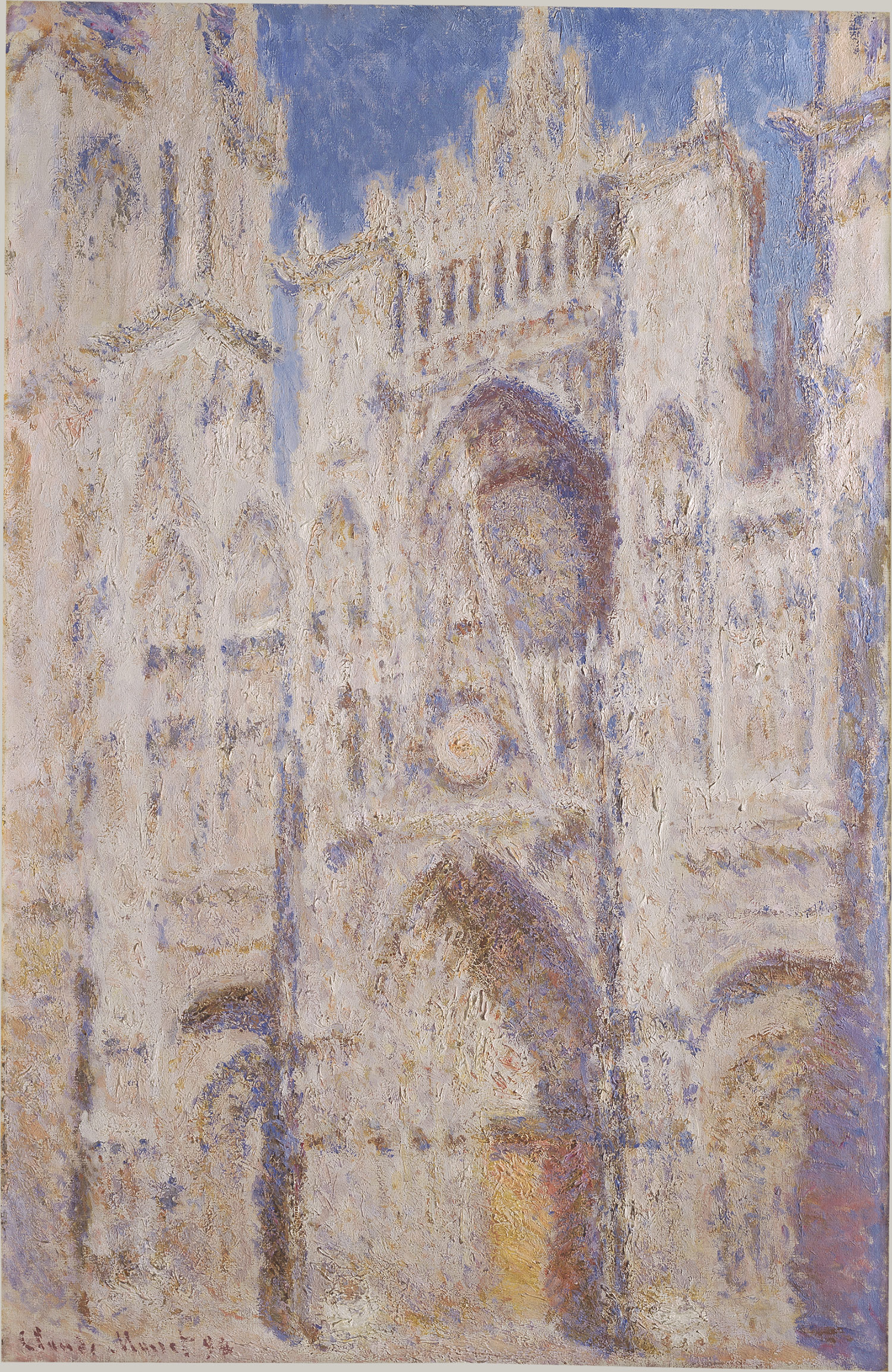During the
19th century Impressionism developed in art, this kind of art was
very different than the standard set by the Academics. Claude Monet was an
Impressionist artist, he found interest in the observation of light and color
which was reflected in his art. Gustave Caillbotte was an artist that some
would argue fits into the Impressionistic style. When one compares Monet’s Rowen Cathedral: The Portal (in sun) to
Caillbotte’s Pont de I’Europe, it
will become obvious whether or not Callibotte work fits into Impressionism.
Before
Impressionism began, artists were painting for the Academy. The Academy only
accepted works that had a smooth finish and interest in perspective. They also
required that the painting’s subject matter should be historical, mythological
or biblical. Impressionism was a way for artists to revolt against the Academy.
Artists started painting plein air, outdoors, which was made possible with the
invention of oil paints in metal collapsible tubes. Monet’s painting of the Rowen
Cathedral is a perfect example of Impressionism. His painting incorporates the
idea of impasto which is a very thick application of paint which leaves the
surface rough when finished. Monet utilizes impasto in a way that helps depict
the architectural elements of the Cathedral. The painting is done plein air,
and shows the urbanization of Paris .
Impressionist artist were interested in conveying realism through observation
of time of day at different locations in Paris .
Monet was known for painting the same location many times to truly capture how
sunlight or the lack of sun affects color. His painting depicts the Cathedral
in sunlight, his colors are pale as they would be if the sun was shining on the
building, and the shadows help convey this too. Monet’s piece appears sketch
like, spontaneous and alla prima, meaning he was painting all at once from the beginning.
One can see Monet’s loose brush strokes, which is an impressionistic style. Impressionist
art usually does not have a narrative behind the subject matter, which is true
in Monet’s painting. His subject matter is a moment in time of the Rowen
Cathedral. Impressionist artist treat their canvas as a flat object, they do
not use perspective to create a sense of depth. In Monet’s painting there is
some atmospheric perspective in the depiction of the sky, besides that the
canvas is relatively flat.
Caillebotte’s
painting Pont de I’Europe, represent
some Impressionistic styles. Pont de
I’Europe was painted plein air and depicts the urbanization of Paris . Caillebotte does
not utilize impasto; instead he has a smooth finish which the Academy would
favor, though there are some loose strokes evident. Caillebotte is also
interested in realism and observing the effects of light and color. In his
painting there are signs of sunlight coming through the structural wall. The color
in his painting helps convey a nice day in Paris . Similar to Monet’s painting, Pont de I’Europe depicts a moment in
time. Different from Monet’s piece there is more to the subject matter. The dog
in the foreground is, in a way Caillebotte’s commentary on Modern life. At the time,
the bourgeois was very fearful of rabies because many poor were dying from
owning pets with rabies. There seems to be even more subject matter in the case
of the woman and the man that seems to be listening or looking at the woman. Caillebotte
creates a sense of depth in his painting. The way the structural wall is
depicted at an angle increases the visual depth.
After
comparing Rowen Cathedral: The Portal (in
sun) and Pont de I’Europe, I came
to the conclusion that Impressionism is evident in Caillebotte’s painting yet
there is almost an equal amount of Academic style seen as well. Gustave
Caillebotte’s style is between the two different styles, utilizing the elements
he likes from both styles. I think that Caillebotte took the truly aesthetic
beauty of the Academic while using plein air and realism of Impressionism.


I really like how you wrapped up your analysis of Caillebrotte's painting by stating that his work incorporates sort of a little of both worlds; impressionism and that of the Academy. I love your quote "I think that Caillebotte took the truly aesthetic beauty of the Academy while using plein air and realism of Impressionism." This is a very good observation!
ReplyDeleteI feel like Caillebotte wasnt much interested in what the academy thought of him... since his paintings usually had nude male models which was very avant-garde at the time. So I dont really agree with you on the idea that he was half Impressionist half Academy, I would say halfish Impressionist, Half Avant-Garde. I did however enjoy reading your post :) hope you have a good weekend!
ReplyDeleteWhen looking at Caillebotte's work vs. Monet's, I get a better understanding of how Caillebotte is selective on how he adopts certain styles of impressionism. I believe this made him a very unique artist for his time. I really feel a great sense of depth with Pont De I'Europe that really makes me want to place into a category of something more, but his looseness in his painting helps bring him back into the impressionist viewpoint. Great analysis!
ReplyDelete